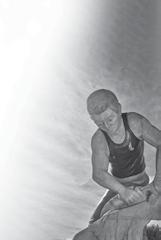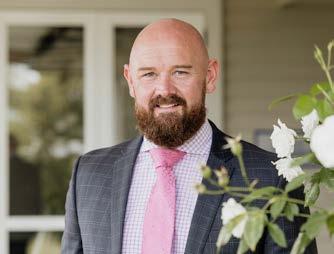




By Chris Gardner
Continuing big rate rises could be a factor in turning Kāwhia into a ghost town, an Ōtorohanga district councillor says.
Kāwhia/Tihiroa Ward councillor Kit
Jeffries spoke against adopting the council’s annual plan for 2025-26 as it meant an average 30 to 40 per cent increase in Kāwhia rates over two years, starting with 10.16 per cent over two years.
“I am going to exercise a conscience vote on this,” Jeffries told fellow councillors at last week’s council meeting.
“I can’t support it. It’s very difficult to stand in front of someone and say what has caused that increase. I can’t. I don’t have the information that I need to say why our rates
in the last two years have gone up 40 per cent. I am really struggling with this.”
Jeffries knew of 18 Kāwhia properties that were charged between $10,000 and $12,000 in rate and lease fees.
“I am really concerned about the effect that this is going to have. We are going to see people leave the town. We are going end up with a bit of a ghost town because people can’t afford to live there. Real estate agents have asked me to ask the council not to put the rates up in Kāwhia because they are having trouble selling properties out there.”
Ray White salesperson Julie Burgess told The News she had two sections and three properties on her books in Kāwhia, and the rates increase could result in more listings.



“Everyone is telling them not to put rates up,” she said.
Jeffries comments came after council strategy and community group manager Nardia Gower told the council the annual plan included a 0.4 per cent rate increase on the Long Term Plan projection for the 202526 financial year.
The plan took into account inflation and increased depreciation costs, as well as $45,000 towards local body elections, an extra $100,000 associated with construction and maintenance of Aotea and Kāwhia sea wall, and $50,000 towards a climate change response plan, Gower said.
Ōtorohanga mayor Max Baxter said the annual plan was based on the Long Term Plan which had gone to extensive community consultation.
“Everyone sitting around this table is confronted by the same rates increased as everyone else is,” he said.
Chief executive Tanya Winter said the council could make significant cuts if it wished.
Councillor Katrina Christison suggested “we just hang back and put the brakes on for a bit.
“Everyone is talking about a fixed income, and how hard it is,” she said
The motion was passed with Jeffries vote against the plan. He also opposed a follow up resolution to raise rates, which also passed.
After the meeting, Jeffries told The News rates affordability was becoming a real issue for many on fixed incomes.
“The ‘economies of scale’ in our smaller communities are becoming increasingly evident, particularly when residential rates for some will exceed upwards of $6500$7000 in 2025-2026.”
Many residential ratepayers faced some difficult decisions on how to cope with increasing commodity prices and whether or not to sell up and move to a larger centre
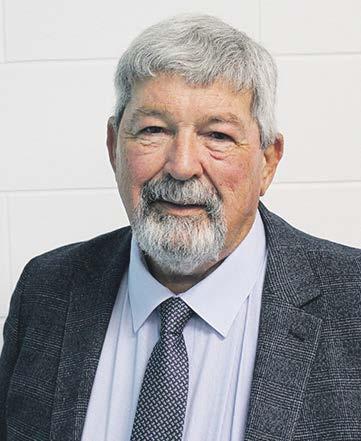
where numbers of similar ratepayers spread and ease the rates burden.
“In a small community like Kāwhia with many leasehold properties, the combination of leases and rates is also proving a financial barrier to the point where they are becoming a determining factor for potential purchasers,” he said.
“I do question how long small councils like ours can remain affordable and sustainable in the future unless something positive is done to address this by central government. With costs ever increasing, councils generally need to look at how they can continue to fund their activities at current service levels and whether in fact the future aspirations of ratepayers captured in Long-Term Plans are affordable. It’s a matter of great concern to me and I’m sure to many others.”
Earlier in the meeting the council listened to Ōtorohanga Community Board and scaled back plans to raise water connection and use charges to $210 and $2 respectively.

Kahu: 027 313 7065
costarflorals@outlook.co.nz www.costarflorals.com
@costarflorals

Floral Subscriptions
Floral Arrangements
Weddings & Events
Funeral Floral Arrangements
Supplying Te Kuiti & surrounding areas
Kahu: 027 313 7065
costarflorals@outlook.co.nz www.costarflorals.com @costarflorals


By Chris Gardner
Ōtorohanga District Council led the way last week as the first of five councils to decide to hand its drinking and waste water over to a council-controlled water authority.
Ōtorohanga councillors voted to join stage one of the Waikato Water Done Well organisation last Tuesday, moments after Taupō District Council had made the decision to keep its water services in house after 74 per cent of the 220 submissions it received favoured that option.
Despite months of discussion and public consultation, Ōtorohanga’s decision was far from a done deal. Three councillors voted against the decision after hearing the district would hold a four per cent stake in the organisation based on the number of water connections.
“I would like to have seen a dollar figure about how much that four per cent is,” said Ōtorohanga ward councillor Katrina Christison.
and keeping water services in house would give staff a chance to learn a lot of skills.
Council engineering and assets group manager Mark Lewis said the analysis indicated that joining Waikato Water Done Well would deliver advantages to the council including greater resilience with better borrowing capacity for unexpected events such as plant failures, civil defence and other emergencies.




Providing transport to medical and health related appointments.
Call our local office to find out more: 0800 846 9992 or email wakaora@stjohn.org.nz
Hato Hone St John’s purpose: To make life-changing differences with our communities Ka whai tātou i te pikinga o te ora
News/Editorial
Roy Pilott editor@goodlocal.nz
027
Office/Missed
maryanne@goodlocal.nz
viv@goodlocal.nz
chris@goodlocal.nz
janine@goodlocal.nz
david@goodlocal.nz
admin@goodlocal.nz
Hauraki, Matamata-Piako, South Waikato and Waitomo district councils followed Ōtorohanga’s lead before Waitomo confirmed its decision at Monday’s council meeting.
Waipā District Council will confirm whether it’s joining Waikato Water Done Well when it adopts its Annual Plan later in the month.
“We have been given lots of competitive information on Waikato Water Done Well. There’s too much uncertainty for me.”
Fellow Ōtorohanga ward councillor Steve Hughes said he had been leaning “more” towards the status quo... “people don’t really understand it”.
Kio Kio-Korakonui Ward councillor Rodney Dow said joining Waikato Water Done Well would cost the council $600,000
In Waitomo, deputy mayor Allan Goddard’s motion to join was seconded by councillor Eady Manawaiti. “This is the biggest decision this council has had to make,” Goddard said. “We need to look forward to what will benefit our ratepayers.
“The reason I support this is based on the principles of kaitiakitanga, it’s about looking after that river,” Manawaiti said.
Waipā District Council has approved the draft constitution and shareholders agreement for
the Waikato Water Done Well council-controlled organisation. But Pirongia councillor Clare St Pierre is unhappy with the level of detail.
“I’m a bit disappointed we haven’t had enough time to understand that in more detail. It’s the urgency. Central Government are cracking the whip on this to get us to a certain point by a date.”
By Jon Rawlinson
Despite a strong stand by Kiwi shearing duo Toa Henderson and Jack Fagan, a Scottish duo claimed victory in the Joe Te Kapa Memorial Trophy test.
The first of the Wools of New Zealand team’s six tests in Europe saw Scotland finish on top by 2.9 points at the Lochearnhead Shears last weekend.
The Scottish pair made for formidable opponents – Calum Shaw is a five-time winner of the Scottish National title and Gavin Mutch claimed the NZ Shears Circuit final in Te Kūiti in March.
Jack Fagan’s father, Te Kūiti’s Sir David Fagan said the first test was expected to prove challenging.
“It was always going to be a tough gig in Scotland for Jack and Toa because the sheep are so different. You’ll only see the Scottish blackface in the islands of Scotland so the locals are very good shearing them,” he told The News.
In addition to the test, Golden Shears Open winner, Henderson, from Northland, and Jack Fagan finished fourth and fifth respectively in the Open.
However, New Zealand-based Mutch was the better shearer on the day winning the Open and scoring the highest individual points in the test.
King Country world record holder Sacha Bond and Wairarapa’s Bevan Pere were also in action in Scotland, both falling in the heats.
New Zealand team manager, Neil Fagan, Jack’s cousin, said he reminded Henderson of the challenges ahead.
“Getting to the final of the Open on his first day of competition in the UK was a big achievement,” he said.
The Kiwi duo will now focus on the second test against England at the Great Yorkshire Show, next week, followed by tests against France and Wales.



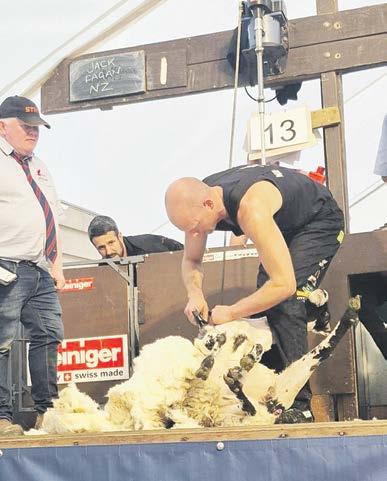

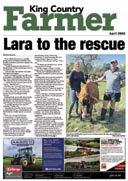

The Lines Company will invest $28.5 million into the local electricity network in this financial year to deliver a more reliable and secure electricity supply for customers, it says in its statement of intent. TLC has also supported a call from shareholder, Waitomo Energy Services Customer Trust to continue investing in community initiatives, balanced with network investment and discounts.
The latest edition of Waikato Business News is out this week and includes profiles by Mary Anne Gill and Roy Pilott on Sarah Thomson and Tim Macindoe who are both standing for the Hamilton mayoralty. The monthly Good Local Media publication – a sister to Cambridge News, Te Awamutu News and King Country News – also includes the turning of the sod at Hamilton Airport’s Precinct North industrial subdivision. See more waikatobusinessnews.co.nz
Thrive Ōtorohanga Youth Trust has been given the use of a Toyota Prius for 12 months by Ryan Prescott of Prescott Toyota. The trust has been using a vehicle donated seven years ago – but it had become unreliable
Avonlea Resthome in Taumarunui has sold the first of eight villas developed by the charitable community trust which runs the home. The villas have rooftop solar panels which provides renewable energy while they have a King Country rural setting with views towards Taringamotu River, the Main Trunk Line and SH4.
Te Kūiti High School sports coordinator Rangi (Nano) Te Whare was the recipient of last month’s Legends award for his work around sport participation and excellence.
By Chris Gardner
The mystery of a field gun being buried in Te Kuiti has deepened.
Since The News reported Te Kūiti and Districts RSA vice president Ross O’Halloran’s tale of a field gun buried beside Mangaokewa River during the Second World War, retired electrician
Russell Shearer has recounted his late father’s tale of a gun buried in Rora Street before the war in around 1936 – and former Riverside Lodge owner David Jones shared another tale of a gun being buried by the river after the 1958 flood.
Shearer presented a photograph of his grandfather Albert riding up Rora Street in about 1922 showing a field gun positioned behind the town clock. Another family photo taken in the mid to late 1930s show the gun has gone.
According to family lore the gun was buried in situ in either 1936 or 1937 – two or three years before the outbreak of war – and Shearer’s father Keith watched men with
pickaxes dig the hole and roll it in.
“Dad never gave me a reason for it,” Shearer said. “He just said that’s what happened.”
The late Keith Shearer spent the Second World War in prisoner of war camps in Europe and later served the RSA as secretary. His father, who served in the First World War, served as RSA president from 1921 to 1944.
A field gun was allocated to Te Kūiti Borough Council in November 1920, according to Great Guns: The Artillery Heritage of New Zealand by Peter Cooke and Ian Maxwell, which O’Halloran has seen this week.
The King Country Chronicle reported a German 110mm Howitzer field gun had arrived on February 20, 1922, and mounted on the on the lawn opposite the Bank of New Zealand on Rora Street. It had been captured by the NZ Mounted Brigade under General Edmund Allenby at the second Gaza offensive in Palestine.
When the soldiers’ memorial obelisk was built to commemorate
the fallen, and dedicated in January 1924, the gun was repositioned to face it, Cooke and Maxwell said in their book.
“I see the Borough Council has decided to shift the German gun from the Rora Street lawn to the river bank,” wrote a correspondent to the King Country Chronicle editor in the February 6, 1926, edition. “Why not pitch the thing into the river, provided a deep enough hole can be found, and be done with it?”
In August 1926, another letter to the editor shows the gun “has lately been removed from Rora Street” with “its muzzle appearing above the flooded Mangaokewa”.
O’Halloran understood the gun had been buried following the fall of Singapore in 1943 for fear of it falling into enemy hands, but now thinks it is just as likely that the authorities might have feared it could have been buried for fear of being mistaken for an active military installation.
Shearer wondered if a second gun had been allocated to Te Kūiti before
being buried.
Jones called O’Halloran with the tale of a gun being buried after the river was widened following a flood in 1958.
“The late plumber Doug McDonald showed me where they buried a First World War gun following the 1958 flood,” Jones said.
He was shown a spot on the riverbank by a streetlight.
Jones thought it was possible it could be the same gun the late Jim O’Halloran had told his son of.
The News understands two guns were excavated in Pirongia in recent decades and taken to Otorohanga for restoration.
“The plot thickens,” O’Halloran said. “This certainly gives me something else to research.”
There are dozens of stories of buried guns, and even tanks, but many are hard to corroborate and have become folklore.
Do you know more? Email editor@ goodlocal.nz with ‘field gun’ in the subject line.







By Peter Nicholl
The Waipa District Council has recently confirmed that this year’s rate increase will be a staggering 15.5 per cent.
Their ten-year plan also projects the rate increases for the next two years will be 10.7 per cent and 6.9 per cent and there was a rise of 14.8 per cent last year.
Over this four-year period, Waipā’s rates will therefore increase by a massive 56.9 per cent.
This year’s rise of 15.5 per cent is one of the highest in the country.
Hamilton City will also have a 15.5 per cent increase.
Tauranga City, which has had a lot of problems in recent years, will have a 9.9 per cent increase and Auckland City a relatively modest rise of 5.8 per cent.
Waitomo District Council, will have an increase of only 2.9 per cent. This seems to contradict the mantra that big is always more efficient than small.
Waipa has said one of the reasons for the high rate increases is unusually high inflation. But New Zealand’s inflation over the period 2024 to 2027 is likely to be around 13-14 per cent.
This is a far cry from WDC’s rate increases of 56.9 per cent over that period. Another explanation offered is that Waipa is a fast-growth area and there is a lag between the costs of development that fall on the council, which come early in the development process, and the fees the Council receives from developers, which come later.
This explanation is correct.
What I don’t understand is that


Cambridge has been in a strong growth cycle for some years already.

Waipa should now be receiving fee income from the projects that were started three or four years ago.
WDC also said they had undergone an intensive cost cutting exercise in order to keep the size of the rate increase down.
Tauranga Council cut their rate rise this year from 12 per cent to 9.9 per cent by reducing staff numbers. I don’t know if their intensive cost-cutting exercise also included looking closely at Waipā staff numbers. I hope it did. What I do know is that they have risen from 189 in 2015 to 295 today.
That is an increase of 56 per cent.
It’s a coincidence that this rise happens to be exactly the same as the rise in Waipā rates from 2024 to 2027.
One thing that will be concerning the Reserve Bank when they come to take their next decision on the Official Cash Rate on July 9 is that most recent surveys of inflation expectations in New Zealand have been rising, and some show the CPI reaching five per cent in the next two years, well above the target range of 2-3 per cent.
When ratepayers in places like Waipā and Hamilton are facing rate increases of 15.5 per cent it is not surprising that their inflation expectations are rising – and that means it is very unlikely that the Reserve Bank will lower their official interest rate any further next week.



















By Jon Rawlinson
It required the efforts of more than just one man and his dog to fetch the Bayley’s Sheep Dog Challenge Shield home last weekend. A team effort ensured a successful defence of the shield by King Country against challengers, Waikato.
“The team went exceptionally well,” King Country team captain, Chris Baker, said.
“It’s all about the combination – the stockman
needs to be able to read the sheep as well as the dog, and the dog needs to work with the boss while also reading the sheep.”
The shield clash was held during the Bayley’s Sheep Dog Trials in Taupō. Chris and his team had the wood on the challengers defeating Waikato by a slender margin of 429.5 points to 419.5. Shield challenge teams feature five members including at least one ‘maiden’ competitor new to the sport.
Initiated in 2022, the shield was first held by Waikato before being lifted by King Country the following year. It has since swapped hands between the two provinces, although Northland and Hawke’s Bay have both mounted unsuccessful challenges during this time.
“We’ve had a few challenges now and we’ve managed to be quite successful at defending the shield,” said Baker, Piopio Station’s farm manager.
A fundraiser for the
Efforts to improve the stormwater network in Te Kūiti are proving successful.
Following recent heavy rain events that resulted in a flooded Mangaokewa Stream, the network coped well under pressure with minimal-to-no flooding in prone areas.
General manager Infrastructure Services, Shyamal Ram says following an injection of funding through council’s Long Term Plan, projects to improve the network are progressing well.
Work has included upgrading culvert headwalls to wing walls to help reduce blockages where surface water is going into the
network, and installation of scruffy domes.
“Our district continues to experience heavy rain events which impact our community particularly Te Kūiti, and it’s great to see the projects are making a difference.
“It has been worth the extra investment in our stormwater network to see great results in reducing the impact on residents and businesses.” Ram says community help will also go a long way in helping prevent flooding pressure points.
“Roading cesspits are often blocked by grass clippings or leaves and debris ends up blocking stormwater
structures.
While the contractors and council staff regularly clear stormwater structures, they cannot be everywhere all the time.
“If it is safe to do so, we would appreciate if residents could clear the cesspits in front of their properties to help avoid flooding if nearby properties. If it is unsafe to clear any blockage, please report it to the council.”
The long term projects of modelling of the Te Kūiti stormwater system to identify further improvements and constructing stormwater ponds are still in the planning stages.




Greenlea Rescue Helicopter, the overall Bayley’s Sheep Dog Trials attracted competitors from Kaitaia to Gore.
Individual honours were secured by Hawkes Bay’s Sheena Martin and Bradley Anderson, who won the Open and Maiden (debut competitor) titles, respectively. As opposed to hill trials, this arena event was held indoors. Arena contests can be more accessible for crowds, especially during the winter months, organiser Dave
Schaw said.
“We were very lucky it was held inside as there was a lot of rain over the weekend. It was an outstanding event and we had a record number of entries in total, just over 300, including almost 50 maiden entries.”
Schaw was behind the introduction of the Bayley’s Shield. His primary aims were to attract new competitors to the sport while adding an extra element of teamwork.
“The shield is operated
very much like rugby’s Ranfurly Shield and it brings a bit more flair to dog trials,” he said. “It’s about getting people to work together as a team, because it’s usually an individual sport, and to make sure teams find young people to become involved.”
The next shield event will be held during September’s Tux Yarding Challenge in Taumarunui. Northland will attempt to break King Country’s stranglehold on dog trial’s version of the log ‘o’ wood.

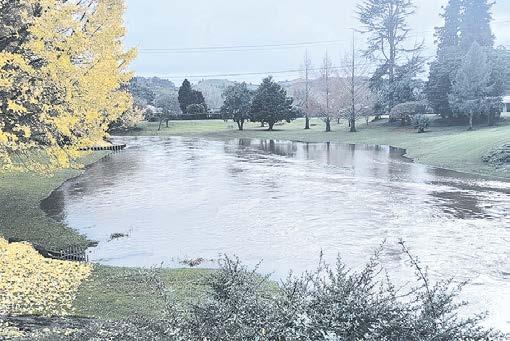

By Janine Krippner
Last week, I covered how volcanically active Indonesia is, noting that it ranks fourth globally for the number of active volcanoes. So, let’s talk about who comes in at number one.
That title goes to the United States—a fact that surprises many Americans when I tell them. I lived in the US for eight years, and it’s a great place to learn about volcanic hazards and how they’re communicated. The United States Geological Survey (USGS) runs volcano observatories in Hawaii, California, the Cascades (Washington, Oregon, and Idaho), Alaska, and Yellowstone.
The US leads with 165 active volcanoesdefined as those that have erupted in the past 11,000 years and are therefore likely to erupt again. Since 1950, 42 have erupted. You can explore these on the Smithsonian Institution’s Global Volcanism Program and the USGS websites.
Some eruptions are particularly welldocumented, including the infamous 1980 eruption of Mount St. Helens and its activity again between 2004 and 2008. Lassen Peak in California erupted between 1914 and 1917, and Mount Hood in Oregon was active during the 1700s and 1800s. And of course, the Hawaiian Islands are famously active, with spectacular recent lava fountains.
But where the US really stands out is in Alaska.

lie directly beneath busy North Pacific flight routes. These subduction zone volcanoes - similar to ours in New Zealandcan produce enormous volumes of volcanic ash, which pose a major aviation hazard. One of the most significant eruptions occurred in 1912 at Katmai. It blanketed the landscape in volcanic ash (essentially pulverised rock). Even today, strong winds can lift this ash back into the air, posing a lingering hazard long after the eruption ended. Volcanoes can remain a threat well into dormancy.
There will be more large eruptions in Alaska. That’s why USGS monitoring is critical - not just for locals, but for global air travel. Their monitoring tools include seismic networks, infrasound, satellites, webcams, and even lightning detection systems.
I can’t talk about US volcanoes without mentioning Yellowstone—the “supervolcano” that sparks questions nearly every time I talk to Americans: Is it going to kill us all? When will it erupt?
Alaska is home to around 140 volcanoes and volcanic fields that have erupted within the past 2.6 million years - 90 in the last 11,000 years, and more than 50 in just the past 300. Many of these could be highly disruptive if they erupted today.
While most Alaskan volcanoes are in remote locations without nearby communities, they
There’s been a lot of fearmongering and conspiracy around the very well monitored Yellowstone. But as with our own caldera systems (like Taupō), these volcanoes are much more likely to produce smallscale activity. The most probable events at Yellowstone are hydrothermal explosions (like those we see in Rotorua) or lava flowsnot civilisation-disrupting cataclysms. It’s only a matter of time before one of America’s volcanoes makes headlines—not just for its eruption, but for the reminder it brings of the dynamic planet we live on and how they can impact us.

By Chris Gardner
A lawyer for Waikato Thoroughbred Racing says a “she’ll be right” attitude has been taken by the company planning a waste to energy plant for Te Awamutu has taken.
The Racecourse Road plant, to be called Paewira, would burn tonnes of rubbish trucked in from throughout the Waikato and generate electricity.
But its site – near the Mangapiko Stream, a Fonterra plant, the Waipā Racing Club track and both Te Awamutu College and Te Wananga o Aotearoa – prompted protests when it was announced.
At an Environmental Protection Agency Board of Inquiry hearing In Hamilton into the planned plant last week, counsel Marianne Mackintosh asked Environmental Risk Sciences director Dr Jackie Wright what the health consequences would be if something went wrong with the proposed Racecourse Road plant.
“I haven’t assessed that,” Wright said. “It’s a hypothetical, and I don’t have enough information, sorry.”
“So, it’s a sort of ‘she’ll be right’ and
wait and see if anything bad happens,” Mackintosh said.
Wright who was called to give evidence by applicant Global Contracting Solutions, disagreed.
“I haven’t assessed it because I haven’t been given that information,” she said.
“So is it your evidence that you can say with certainty that there will be zero premature deaths as a result of this plant being located next to a residential population?” Mackintosh asked.
Wright responded she could not say that.
“I don’ know how you would measure zero.
“There is a small risk of increased premature deaths. Now, whether you call it premature deaths or probably the more useful health measure, to actually calculate is the years of life lost, which talks about how many days of a person’s life a particular exposure may result in... that’s actually a much more useful measure than just saying a premature death,” Wright said.
“So, if you’re going down that line and you had some certainty, that’s what you would calculate. But there is always going to
be a risk with exposure to changes in PM2.5 [particulate matter] and NO2 [nitrogen dioxide]. And that’s just part of those calculations. And the aim is to reduce that to as low as possible.”
Environment Defence Society and Zero Waste counsel Sarah Ongley asked Global Contracting Solution’s air quality consultant Dr Terry Brady whether dioxin spikes could occur without being measured.
“I’m just stating a hypothetical, if something went wrong with the plant,” Ongley said. “You are saying it won’t. But I’m saying if it does, a dioxin emission could occur that won’t be measured?”
“In theory, that is the case, yes,” Brady said.
Sampling takes an hour, and it takes a week or two to get the results back from Melbourne, Australia.
Under cross examination from Fonterra’s counsel Daniel Minhinnick, Brady said when Fonterra’s own boiler start-up “you’ll get spikes of dioxin from that plant as well”.
“My expectation is that the risk from that potential odour source is actually far less than the existing aerobic and anaerobic
ponds at a similar distance from Fonterra’s own wastewater treatment system,” he added.
“That in my opinion would be a much greater odour rather than the proposed plant.”
The applicant is considering almost doubling the length of the plant’s chimneys from 38 metres to 60 metres
“The 38-metre stack is adequate,” Brady said.
“It does the job, meets the appropriate Ambient Air Quality Guidelines and Standards. Quite clearly, a 60-metre stack would do better. Of that, there is no doubt.”
The waste to energy plant proposal has attracted more than 1300 submissions, the vast majority opposed. They include objections from mana whenua, DairyNZ, Fonterra, Te Awamutu-Kihikihi Community Board and Waipā District Council.
About 64 per cent of submissions expressed concerns about pollutants, including dioxins and nanoparticles, and there were concerns about the lack of a health impact assessment.
The hearing is expected to end tomorrow.




In 2020, New Zealand voted “no” on the legality of cannabis. Still, around 14% of kiwi adults acknowledge using it, and employers may want to have comfort that their workers aren’t ying high at the jobsite. As such, they might consider drug testing.
Testing for drugs and alcohol is carried out at work because these substances can lead
to impairment. This can create a dangerous work environment, both for the user and their co-workers.
Employers can’t just hand you an empty sample cup and send an employee o to the bathroom, however. There must be a reasonable drug and alcohol policy in place and the employer must also have a reasonable belief that employees might be
impaired at work or that testing is required to manage risks to health and safety.
Employers wanting to test for drugs and alcohol should seek legal advice to ensure that their drug policy is fair and that they are following a fair process. Employees also have the right to seek legal advice at any time so they know what their rights and obligations are.

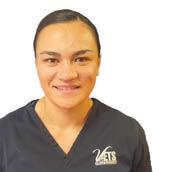

As the temperatures drop and we bundle up in scarves and blankets, it’s important to remember our pets need winter care too. Just like us, they feel the chill, and the season can bring unique challenges for their health and comfort. Whether you have a sprightly puppy or a wise old cat, a few mindful adjustments can keep your furry companion happy and thriving all winter. Keep them warm as not all
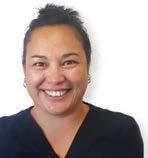

Taking care of your teeth helps prevent cavities and gum disease. Brushing twice daily and ossing once a day properly can prevent plaque. Gum disease starts when plaque builds up under and along the gum line. Plaque is a sticky lm-like substance that’s lled with bacteria. It can cause infections that hurt the gum
pets are built for the cold. Short-haired breeds, senior animals and smaller pets may need extra protection when venturing outdoors. Coats are a simple and a ordable way to help retain body heat, especially when out on walks. For aging pets make sure to support joint health as the cold can aggravate arthritis and joint sti ness. Signs like limping, reluctance to climb stairs, or reduced playfulness may indicate
and bone, leading to gum disease and tooth decay. Plaque also can cause gingivitis, the earliest stage of gum disease. Gingivitis causes your gums to become in amed and swollen. A few signs of gingivitis include consistently bad taste or breath, gums that are swollen, red, or tender & bleed easily
discomfort. While your pet still needs physical and mental stimulation, they may need shorter, more frequent walks if its too cold. This is also a great time of the year to monitor for any changes in behaviour with diet and exercise and schedule in a wellness examination with your veterinarian. Preventative care helps to identify and manage any issues before they become more serious.
when touched or brushing. Regular Dental check-ups and Dental Hygiene cleans are important to ensure your teeth and gums are Healthy.
Phone Otorohanga Dental Surgery on 07 873 8824 or 0800 686 336 to book your Dental Exam or Dental Hygiene appointment TODAY!



With the situation in the Middle East evolving rapidly over the past week, it’s understandable to feel uneasy if you’re due to travel soon. In times of global uncertainty, working with a trusted travel agent provides clarity, con dence, and options. While unrest in parts of the Middle East dominates the headlines, it’s important to remember that
news coverage often ampli es situations. The key thing to know is that airlines — with teams on the ground in a ected areas — closely monitor conditions and will not operate ights where safety is compromised. We’ve already seen some routes adjusted in the past week to ensure traveler wellbeing.
As your travel agent, I have direct access to
the latest airline and destination updates, helping you plan safely and exibly. And if you’d prefer to stay closer to home during these times of uncertainty, there are countless incredible destinations perfect for a relaxing, cultural, or adventurous escape. With expert advice, safe travel is always within reach.

The Lines Company’s contribution to the Girls with Hi-Vis programme showcased roles in the electricity sector to 13 young women last week.
More than 500 secondary school students from around the country have attended almost 30 such events hosted by employers who have given female students the opportunity to try their hand at on-the-job trade skills and gain a practical understanding of what work-based training and apprenticeships can offer them as a career pathway.
Run in partnership with training company, Connexis, the programme will help TLC increase female representation, chief executive Mike Fox said.
“Thirty per cent of our team are women, and we’d like to see more take up the opportunity to work in our hands-on field operation teams. Events such as Girls with Hi-Vis are a key part of our strategy to enable that.”
Activities throughout the day for Te Wharekura o
Maniapoto and Te Kūiti High School students included operating industry tools under the guidance of TLC’s engineering team.
TLC’s customer projects engineer Ceelia Johny was among women sharing their experiences with the students.
Connexis executive director Kaarin Gaukrodger says the real world experiences the secondary school students gain at Girls with Hi-Vis events gives them an understanding of what working in these trades will be like and the advantages of work-based apprenticeship training toward gaining a tertiary qualification and a career.
“The students come to Girls with Hi-Vis events from school where most of their learning is classroom based. Being exposed to real working environments, often at some of the country’s major infrastructure assets like power stations and roading projects, opens them up to a whole new practical way of learning,” she said.

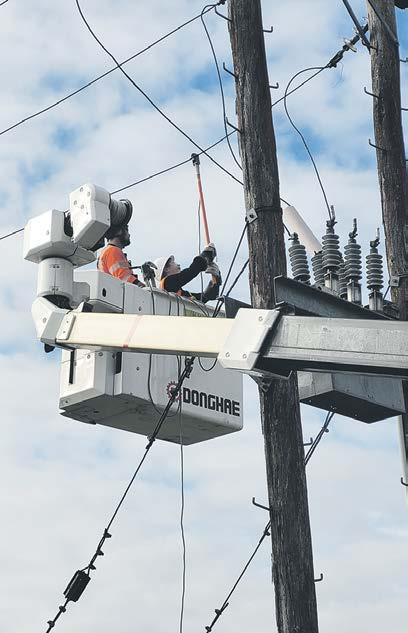
In Ōtorohanga, we care about each other, our environment, and the future we’re building together. When things get tough - whether it’s rising living costs, changing weather, or new national rules - we know that staying connected, planning carefully, and supporting each other matters more than ever.
That’s why Ōtorohanga District Council is staying true to the course set in our 2024–2034 Long Term by confirming a 10.16% overall rates increase for 2025/26 forecasted to be 9.76%, that’s a difference of 0.4%. We understand this decision comes during financially challenging times for many in our community. It wasn’t made lightly. It reflects our shared commitment to keeping the lights on, the water safe, and our roads and coastlines cared for, both now and for future generations, all while managing the increasing costs imposed by central government legislation.
WHY ARE RATES GOING UP AGAIN? When the Long Term Plan was developed in 2024, Council deliberately took steps to reduce the impact of rates increases in the first year. Those steps included using one-off funding sources and reducing the amount collected to fund depreciation. These choices helped
ease pressure temporarily but shifted some costs into later years.
This year is about restoring financial balance and following through on what we said we would deliver.
WHAT’S DRIVING THE INCREASE THIS YEAR?
Several key costs and new responsibilities contribute to this year’s 10.16% rates increase:
• Election costs: 2025 is a local election year. We’ve budgeted $45k to run the election. The additional $15k for the legislatively required Māori Ward referendum is a new cost.
• Increased asset maintenance and consent costs for the Kāwhia and Aotea seawalls, following recent investment in coastal infrastructure we budgeted additional $90k on this years $10k.
• $50k for our Climate Change Response Plan. Previously funded by one-off sources, this now transitions to being funded through rates to ensure long-term implementation, sustainability and accountability.
• Operational funding of $58k for the Ōtorohanga Historical Society to support the running of the museum, recognising its value to our district’s heritage. This includes $35k of funding redirected from a
grant to Creative Waikato budgeted in the Long Term Plan. That’s a new cost of $28k.
• Long Term Plan review work begins during the 2025/26 year in preparation for the next ten-year Long Term Plan – a project requiring staff, consultation, and specialist support budgeted at $50K
• Increased depreciation costs, reflecting both a move from 50% to 75% funding for certain assets and capital investment in water and wastewater infrastructure –including projects in Kāwhia and Ōtorohanga. This ensures we’re setting aside funds now to replace assets when needed.
• Inflation adjustments across almost every aspect of Council’s operations – from materials, wages and fuel to professional services and insurance.
• Taumata Arowai and Commerce Commission levies of $40k for central governments Local Water Done Well regulation, is the last of the new costs we didn’t know about until after adopting the Long Term Plan.
WHAT IF WE DID LESS?
We asked ourselves that too. Could we defer more? Cut deeper? The answer: not without real consequences. Deferrals would weaken vital infrastructure like roads,
water supply, and coastal protection. Cutting deeper would reduce services people rely on.
Instead, Council chose to stay the course: to protect what matters, plan ahead, and act with integrity by delivering on the promises we made to you in the Long Term Plan.
“Rates are always a balancing act between today’s affordability and tomorrow’s needs,” says Mayor Max Baxter. “We’re choosing a path that’s responsible and future-focused.”
We understand this year’s increase is significant however Ōtorohanga still maintains one of the lowest average rates in the Waikato, and every effort is made to keep services efficient and costs under control.
“By investing now – in planning, infrastructure, and community resilience – we’re helping ensure Ōtorohanga continues to be a great place to live,” says Mayor Baxter. “We’re staying steady on the path we’ve set with the community, and we’ll keep listening every step of the way.”
To read the full 24-34 Long Term Plan and 25/26 Annual Plan head to engage.otodc.govt.nz/annual-plan

Bailey Ingham Ltd was first established in 1976 by David Bailey. Today Bailey Ingham has three offices - in Otorohanga, Te Awamutu and Taumarunui. The firm has five Directors being David Bailey, Cheyne Waldron, Bridget Boshier, Kelly Bair and Layne Kerr. They are supported by Jayne Adams, Michael Crook, Carolyn Dew, Jenny Martin and Vanessa Skelton, who are Associate Directors, while Robert Ingham continues to act as a consultant to the firm. In addition to the Directors and Associate Directors, Bailey Ingham Ltd has a large number of qualified and experienced staff who have an excellent knowledge of business,
farming and taxation matters.
Bailey Ingham Ltd has a great reputation for providing top quality business advice and financial information with exceptional client service being one of its primary goals. In addition, Bailey Ingham is a huge supporter of the local community, completing financial accounts and doing voluntary work for over 120 not for profit organisations. In the 2018 Stuff NZ accountancy firm survey Bailey Ingham was awarded first place in New Zealand for the amount of charitable and community work it undertakes.
Contact the team for a free, no obligation, interview to discuss your financial requirements. Bailey Ingham Ltd | 18 Maniapoto Street, Otorohanga | Ph: 07 873 7325 | Email: info@baileyingham.co.nz | www.baileyingham.co.nz
Contact the team for a FREE NO
INTERVIEW to discuss your financial requirements.
Founded in the 1920s, Finnz Ltd Chartered Accountants (formerly Finn & Partners) has been a part of the Te Awamutu community for almost 100 years. Our name comes from Dick Finn (father of Tim and Neil), who became a partner in the 1950s. Our current Managing Director, Allan Spice, has been with Finnz for more than 25 years. We are located at 80 Market Street and have a team of 20. Recently, we have also expanded to Hamilton, with an o ce at 56 Church Road. We service the Waikato, King Country, and beyond—with clients in the South Island and overseas.
While preparing financial statements and tax returns is our core service, we believe accounting is much more than that—it all comes down to building strong relationships with our clients. Our services also include business advisory, tax planning, trust management, payroll, and bookkeeping.

Our sta , aged from 22 to 72, bring diverse backgrounds, interests, and expertise. We are also part of Te Awamutu BNI (Business Network International). We have a strong interest in farming and other progressive businesses. If you are self-employed and want to grow your wealth, we’d love to hear from you.

When it comes to the financial wellbeing of your business and meeting tax obligations, working with an accountant who understands their clients is vital, Kiwi Accounting Solutions partner, Megan Johns, confirms.
“We are not just about numbers, it’s about developing enduring relationships with our clients” she says.
“Because we know their history as well as their short and long-term plans, we are in a better position to advise and potentially prevent unwanted issues further down the track. At the end of the day, no one likes surprises!”
A little investment in terms of time from the outset can save time and money in the long run.
“With a new business, there are some big decisions to make. With our help, you can navigate these, so they don’t come back to bite you in the future.”
With decades of experience, Megan and the firm’s director, Alastair Flett, draw on extensive accounting knowledge.
From general accounting to tax guidance, business acquisitions, estate planning and more, this Kiwi team provides a comprehensive range of services.

In addition, the recent retirement of another wellknown local accountant, Duncan Gray, has seen Kiwi Accounting Solutions grow through a merger of the two businesses, Megan confirms.
Focussing on small-medium businesses (SMEs), the team is also well versed regarding rural operations –Alastair and Megan both come from strong farming stock.
“The IRD rules around farming are complex and clients won’t benefit from them without specialised experience,” Megan says. “But there’s much more to it. Operating seasonally, and being heavily impacted by nature, primary sector businesses have extra challenges.”
Even something as simple as a solid grasp of terminology or working to a country timetable can be invaluable, Megan explains.
“When farmers talk ‘shop’, we know exactly what they mean, which helps us cut to the chase.
“Also, for example, farmers don’t want to discuss the books when they’re up to their elbows calving a cow before they’ve even been in for breakfast – call then and
you can be sure of a very chilly reception!” Although able to assist clients nationwide, there’s no substitute for one-to-one service. Based on Rewi Street, Te Awamutu, Kiwi Accounting Solutions has an extensive base of clients from throughout the Waikato, Waipa and King Country.
“The major benefit of being so close to home is that clients can easily pop in and discuss their needs face-toface,” Megan adds.
“Sometimes it’s easier to communicate in person and it means we can (sometimes quite literally!) be on the same page.”
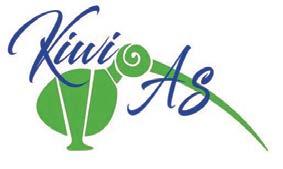
By Norris Woodbine
The clash dubbed the King Country Club Premiership’s match of the round saw Waitomo fail in it finals effort to secure a competition win at Waitomo Domain last Saturday
After both sides slogged out a scoreless first half, Taumarunui Eeels kicked away in the second half, scoring six tries in a 38–0 victory.
Taumarunui won the toss and elected to play uphill in the first half in what proved to be a decisive decision as the fatigue factor for Waitomo later in the game saw field dominance play a vital factor.
Waitomo, in front of a large crowd featuring sponsors and past players produced probably their best first half of the season as they frequently turned away the Taumarunui attacks with last gasp defensive efforts.
Flankers Kees Muller and Brooklyn Pye were prominent, often turning up just in time as the try line appeared open with punishing tackles causing errors. The solid Waitomo pack also caused the visitors real problems
at scrum time with Ratapu Winikerei, Rangi Mulligan-Green and Liam Fredrickson along with the father/son combination of Kenneth and Tipene Perawiti all featuring.
Veteran half back Gareth Owen played himself to a standstill while young Wetere Wehi made an outstanding debut in the unfamiliar first five position, demonstrating a solid kicking game and sound decision making. Reuben Dimond looked assured when he replaced Owen, while Freemin Te Whare and Vaughan Haylock tackled everything thrown at them.
There is a drop of many metres on the Waitomo Domain field and the uphill slog in the second half proved decisive as tired legs and astute Taumarunui substitutions opened holes appear in the defensive screens.
Finishing the season without a win saw the match draw down the season for Waitomo who sit out the final round with a bye while The Eels booked a first division final berth no matter last round results.
Piopio travelled to Taupo and proved to be no match for a rampant Tongariro United who
ran away with a decisive 60–5 victory and in the process looked to have set in place a home premiership semi-final. Also down in Taupō, home side Marist side turned
back a determined Hetet Shield bid from defending champions Taumarunui Districts and remained in first place with a 34 – 29 victory. Of note was the non-result
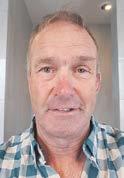
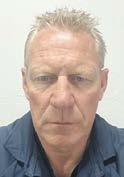
in the Waikato Women’s First Division bottom four competition which handed the title to the local Waitete side, a great achievement for the fledgling side.
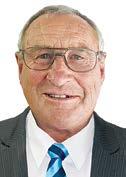







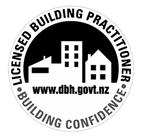



















Health had to be one of the priorities for the burgeoning population of the King Country. Too remote for easy access to the general hospital Hamilton was becoming, and particularly with the expansion of the population, meant those involved in healthcare needed something that was close by.

In 1908, Nurse Emma Hattaway, a certified and registered nurse, initiated the first private hospital in Te Kuiti, named Whangaruru, in Taupiri Street.
Not even a year later, recognising the growing healthcare demands, she was responsible also for organising a new facility called Wharenana on a hill overlooking the township. This building provided rooms for five patients, including a special ward for accident cases, and was noted for its “comprehensive facilities and pleasant environment”.

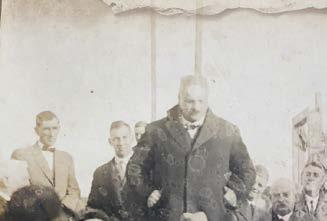

Despite the presence of private healthcare facilities however, the need for a public hospital became increasingly evident and from 1913 onwards, the concept of having its own hospital began to be the focal point for some of the town’s leaders.
In 1919, local representatives, including Mr James Boddie, a member of the Waikato Hospital Board, advocated for the establishment of a cottage




hospital in Te Kuiti to the board.
However, the proposal was met with resistance from a number other board members and was rejected at its first presentation, highlighting the challenges faced in expanding public healthcare services in the region. The hospital board had only just got over a two decade fight to get central government to detach it from Auckland - where it had been shown that while Waikato was providing an annual sum of 2500 pounds to pay for its services to the Auckland District Health Board, it was receiving just 100 pounds back each year. So the green light had been given to develop a decent hospital for the city and wider Waikato region. Such funds for what was perceived as cottage hospitals throughout the province were thought to be taking away from the regional base, however.

Despite this setback, Te Kuiti-based James Boddie, who had a formidable resume in terms of both central and government experience, as well as having been a former Hawera Hospital Board member, wasn’t prepared to let the matter go.
So much so, that by March 13, 2025, with a constant push from the Te Kuiti community, the board had relented and according to the Auckland

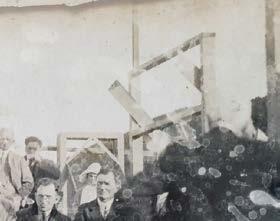



Star, the tender to begin work on the hospital had been let to F W Willoughby for the sum total of 18,819 pounds.
That same persistent community advocacy led to the laying of the foundation stone for the Te Kuiti Hospital not even four months later, on July 18, 1925. The ceremony was attended by notable figures including Sir Maui Pomare, the Minister of Health and Hospitals, and Waitomo MP Mr John Rolleston and presided over by James Boddie who had been elected Te Kuiti’s mayor in the interim.
Sir Maui Pomare acknowledged the community’s efforts and the significance of the hospital for the district’s progress.

As he noted at the time, a significant contribution to the hospital’s establishment was the donation of three and half acres of land by John Taionui Hetet, demonstrating the collaborative spirit between Maori and pakeha communities in advancing public health infrastructure.

The importance of this had been felt during the pandemic that was the Spanish flu less than a decade before, which had been keenly felt in the region, and the success of the temporary hospital that had been set up at the Te Tokanganui-a-noho Marae in Te Kuiti to treat Maori patients afflicted with the flu.

On behalf of everyone at Lamb Bain Laubscher Lawyers, we would like to extend our heartfelt congratulations as you celebrate your centenary. For 100 years, Te Kūiti Hospital has stood as a cornerstone of care, compassion, and commitment in our community. Your service has touched countless lives, and we are deeply grateful for the vital role you continue to play in the health and wellbeing of the people in our region.






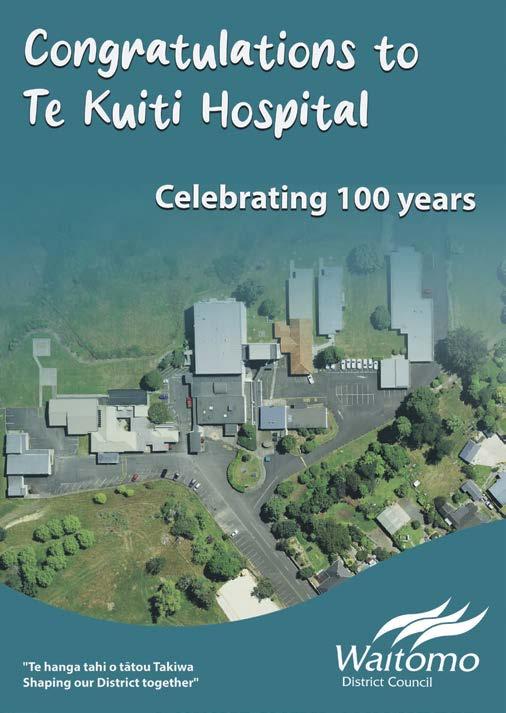



The success of Te Kuiti Hospital would never have got to the point it did without the dedicated and sustained drive of its longest-serving surgeon-superintendent, Dr John Woodward Mandeno, QSO

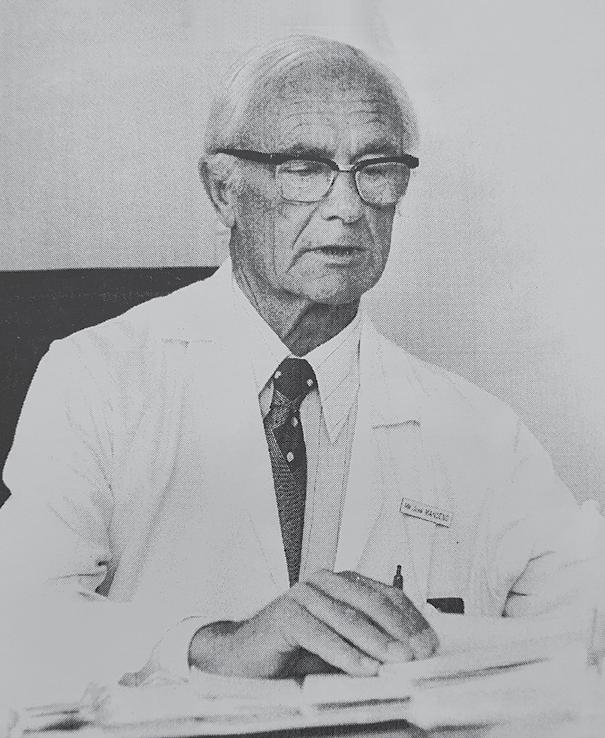






John was a distinguished New Zealand surgeon and healthcare leader whose career is believed to have significantly shaped the medical landscape of the Waikato region, and particularly, through his transformative work at Te Kuiti Hospital.
Born on March 25, 1919, in Tauranga, John was the son of Lloyd Mandeno, a Te Awamutu-born pioneering, hugely inventive electrical engineer renowned for developing the single wire earth return (SWER) system, (sometimes known as Mandeno’s clothesline) which revolutionised rural electrification in New Zealand, and with his inventions in this field being used all around the world.


He was responsible for the building of no less than eight power stations in New Zealand, was an MP and very active local body politician.
So, inspired by his father’s commitment to service, John pursued a career in medicine.
In 1945, he and his wife, Annette moved to Te Kuiti, where he established a general medical practice. His dedication to the community he’d adopted as his own, and desire to improve public healthcare services, led him to take on the role of full-time surgeonsuperintendent at Te Kuiti Hospital in 1965.
Under his leadership, the hospital evolved from an at best modest cottage facility into a comprehensive 105-bed general hospital, significantly enhancing medical care accessibility for the King Country region’s residents and for many patients throughout the Waikato by taking on overflow work from Waikato Hospital.

young doctors, many of whom later became specialist surgeons in their own rights.

John was also an author, documenting the hospital’s history in a two-part series titled “The Story of Te Kuiti Hospital,” covering its development from its initial concept in 1903, through to 1986. His writings provide valuable insights into the challenges and triumphs of rural healthcare provision in New Zealand at a time when most towns had their own hospitals.
He was also a prolific writer to newspapers, “blasting health reforms” and predicting the mistakes being made by successive governments and others in what he saw as costcutting, profit-driven and competitive reforms that resulted in the loss of no less than 20 surgical hospitals in New Zealand.

He was an active surgeon, involved fully in training of




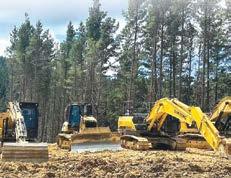
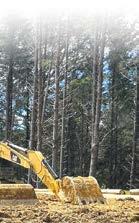
After retiring from his superintendent role in 1982, John continued to serve the hospital part-time until 1986.
Beyond his medical career, he was an avid yachtsman. In 1987, he completed building his yacht, ‘Rererangi’, and embarked on extensive voyages, including an 80,000km solo circumnavigation of New Zealand during the 1990s. He also spent time as a medical missionary in Indonesia, relieving a Dr D Gray at Bantung Hospital for three months in 1967. John’s hard work also extended into community service.
He was appointed a Companion of the Queen’s Service Order (QSO) in 1983 for his dedication to public service. This included his long-term involvement in St John, active participation in scouting, and serving as an elder in the Presbyterian Church.







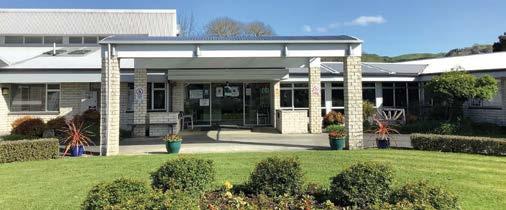







Young, married, with an infant family and dreams full of the future, doctors Keith Buswell and Elly Kroef arrived in Te Kuiti in 1986. They had purchased the practice of solo GP Bob Valkenburg who had been operating in the town for more than two decades.
“We started off by job sharing because our children were small – one of us would be at work while the other was at home looking after the children,” Keith says.

“One of the reasons we wanted to live in Te Kuiti was that the hospital at that time had a busy obstetric unit, a field we were both interested in. “We also had a small block of land and a line of cattle that had difficulty calving. When I had to duck out of the surgery one morning to calve a cow, our practice nurse told the patients I was away doing a delivery. “They were none the wiser that it wasn’t the obstetric unit I was going to,” Keith grins.
“Most GPs did obstetrics, and the hospital also had a gynaecologist, Ramesh Thacker.”
At that time the hospital had 105 beds and was considerably larger than the town actually required, Keith says.
“As time went on it became harder for the hospital to recruit both senior and junior staff; so much so that by the early 90s, it was almost impossible to get new doctors at all.”

It was the vision of retired Hospital Superintendent John Mandeno to have a modern geriatric ward added to the hospital as he could see future need for such a facility.
“Work on this building was completed in the early 1990s but it soon became clear it was too expensive to run, so 18 months after it was opened, it was mothballed,” Keith says.
“As a result of the difficulty in finding junior doctors for the hospital, Drs Mike Miskelly, John Earwaker, Anne Farnell, Elly and I started to look after patients on the medical ward and in the emergency department,” Keith says.
“This naturally led to the idea to turn the vacant geriatric unit into a medical centre that would allow us to work in the hospital more easily, instead of having to do so from our surgeries in the town.
“Negotiations with the hospital board, represented by cardiologist Clyde Wade, followed. In October 1993 the newly formed Te Kuiti Medical Centre started operating out of the renovated geriatric unit with a formal agreement for the doctors to provide medical manpower in the hospital.”


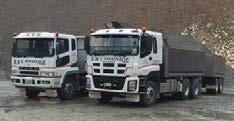
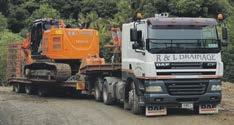


“This was a completely new concept which meant the GPs would need to work with existing senior specialists in the hospital and provide medical services on the ward …and in ED, something that was outside our normal scope of practice.”
“There was a real fear, in the late 80s, early 90s, that small town hospitals were closing and Te Kuiti was no different. This seemed like a good way to secure its existence into the future,” Keith says.


small hospitals,” he says.
“Surgery isn’t as easy as it sounds either. Quite apart from the problem of finding surgeons, regulations in relation to anaesthetists were changed in the latter part of last century, requiring the presence of at least two in a facility where general anaesthetics are being given.”
“So, we have continued to work on that same model for the past 30 years, renegotiating where it’s been needed and continuing on with the training of staff that was started in the 70s, just changing the structure of how that worked as time, situations, and regulations changed.
“The older doctors have retired but been replaced by others such as Dr David McLean in the late 1990s.”
Keith says by the time they took on the hospital contract, most of the wards had closed because of the inability to get staff and because of the changes in the way that funding was allocated by the government.
“There had been a degree of gamesmanship in the way the hospital had grown to the size it had (not uncommon for small hospitals at the time) –it was a large hospital for the size of the town and it had to be faced that some of the surgical services effectively attracted funding and staff from other places that needed it.


“Another important factor has been the increase in specialisation in all branches of medicine and the exponential increase in investigative capability (CT, MRI, ultrasound to name a few) which can only be provided from larger centres.
“The capabilities of medicine in 2025 are so much more sophisticated than they were even 30 years ago.”
He says people tend to forget the massive changes that have happened in health in the past 100 years.
“It’s transformed, really – in the 1920s, it [Te Kuiti Hospital] was set up primarily in response to the Spanish flu – but it was also a fact that most small hospitals were at least 80km away from a city hospital, and patients often travelled by train or by horse.
“In the 1960s, the hospital had a paediatrics ward – because so many kids then had illnesses like rheumatic fever, which could necessitate months in hospital.

Training and regulatory changes also affected the strong tradition of nursing training the hospital was involved with.

“There was a move away from training on the job during the 1980s, and nurses had to attend the larger centres where the polytechs were in order to obtain their nursing qualifications.
“Larger hospitals took over their practical training, with only a small part of the training in the outlying regions,” Keith says.
“It was just another one of many things that saw the decline for small town hospitals.”
Yet for all that, thanks to the tireless efforts put in by the doctors and long-term hospital and medical centre staff, Te Kuiti Medical Centre and hospital are still responsible for the regular training of many young doctors, nurses and allied health professionals.
A new scheme, implemented by the Auckland Medical School, which is mindful of the push by Waikato University for an additional medical school, has this year seen Te Kuiti, along with Hawera, Wellsford and Coromandel practices take fifth-year medical students who will do the whole of their year training with them.

“Today, only a relatively small number of children need hospitalisation and for those that do, the specialised care required can’t be provided in

R & L Drainage thanks Te Kuiti Hospital for its service, past, present and future

The students who come to Te Kuiti will also spend time working in Otorohanga and Kawhia.
“Starting in 2024 we have also had second year house surgeons who spend three months working in both the hospital and medical centre as part of a community attachment initiative that is aimed at giving all newly trained doctors exposure to community based and rural medicine,” Keith says.
“Most importantly we have been a training centre for GP registrars and Rural Hospital Medicine registrars for several years.
“This is the group that is most likely to make a career decision that will keep them in rural medicine and, hopefully, in Te Kuiti.
‘We have already had success in this regard in retaining doctors’ Dinesha Kumarawansa and Simeon Intal who have become partners in the medical centre, and who share our vision for medical services in Te Kuiti into the future,” Keith says.



■ Site prep & excavation ■ Tracks & races ■ Farm drainage ■ Underpasses ■ Entrances / driveways ■ Metalling ■ Carting fill ■ Transporting to 27 tonne ■ Effluent ponds
■ Grader, roller and bulldozer ■ Site stabilisation ■ Unicontrol GPS ■ Muckspreading





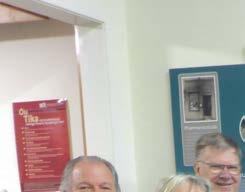
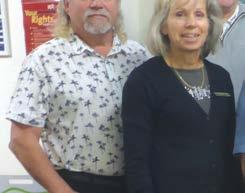

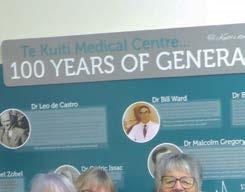
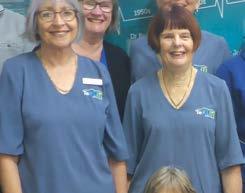
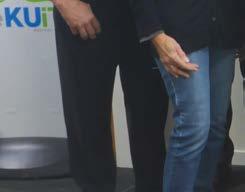
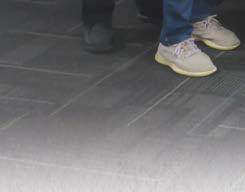


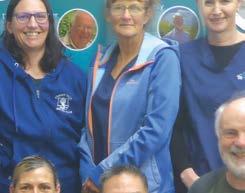
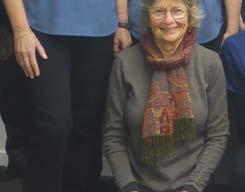
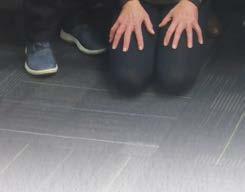



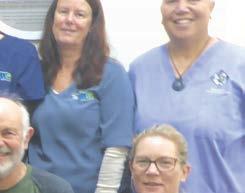

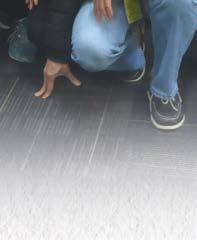
provides a comprehensive range of services to patients in Te Kuiti and the surrounding rural district.

SERVICES INCLUDE:
• Consultations - GP, PA and Nurse Practitioner • ACC and Urgent Care • fractures
• wound management • Cardiovascular risk assessment • ECG’s • Diabetes • Pregnancy
• Sexual Health and contraception • Insurance, Driver and Employment Medicals
• Minor Surgery including Vasectomy • Vaccinations • Ear Suctioning and Tympanograms
• Smoking Cessation
IN HOUSE CLINICS:
• Health Improvement Practitioner • Mental Health Nurse • Psychologist • Podiatrists
• Bloom Hearing
Te Kuiti Medical was established in 1993 when Drs Miskelly, Earwaker, Farnell, and Drs Buswell and Kroef amalgamated their practices and moved into the existing but unused geriatric unit at Te Kuiti Hospital. Soon after they were joined by Dr McLean.
This new arrangement allowed these doctors to provide medical services to Te Kuiti Hospital, while continuing to work as general practitioners for the community. At this time small hospitals were under threat because of the di culty in recruiting medical sta to rural areas. This mutually beneficial partnership continues to the present day and has ensured that Te Kuiti Hospital has continued to provide 24 hour medical care, operate a modern emergency department, and provide inpatient services and a wide range of outpatient clinics to our community.
Te Kuiti Medical Centre has been very active in training medical students, junior doctors and nurses - a role which has recently increased with total immersion fifth year medical students.
Te Kuiti Medical Centre is committed to continually upskill all sta , and ensure awareness of needs across our community, to ensure that the community is well served in to the future.

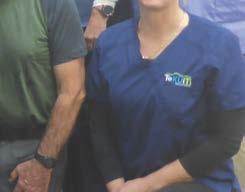



For most of us, the rst step to Good Health is to take responsibility for how we live life!
This message is not new–
The six best doctors anywhere And no one can deny it
Are sunshine, water, rest and air
Exercise and diet.
These six will gladly you attend
If only you are willing Your mind they’ll ease Your will they’ll mend And charge you not one shilling
So...
•Eat well, sleep well and take every opportunity to be active!



• Find joy in life without drugs and alcohol
•Stay connected to friends and whanau
•Take pride in what you do and savour life’s simple pleasures.
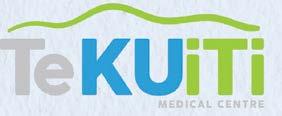




Like many before him, Professor of Population and Health, and Director of Medicine at Waikato University, Professor Ross Laurenson, spent time training at Te Kuiti Hospital.
It’s a time the English-trained surgeon remembers fondly.
“I came out in 1981; it was one of those things you did – you had just finished six or seven years of training and heading out [to places like New Zealand] was the norm,” he says.
Originally, he applied for a position at Thames Hospital, but was told they didn’t have the role he was looking for there – but did in Te Kuiti and would he be interested in that?


He was and was only a matter of a few months later that the family steamed into Waitemata Harbour in Auckland.
“And it was amazing. The hospital sent up a car for us, I was taken to Auckland Hospital to get my registration in order, and off we went.”

operations where it could to its satellite hospitals.

“You could do a bit of everything there, from surgery, core medicine, obstetrics, paediatrics, orthopaedics.

“In fact when I got there, John Mandeno asked if I had ever done a tonsillectomy, to which I replied I hadn’t.
“So he said, “I’ll show you how it’s done and then you can do all those.’ And I did – there were a lot coming through as overflow from Waikato [Hospital] at the time.”
And that kind of operation wasn’t the only type.
“We had some of the most amazing surgeons and doctors go through Te Kuiti at that time on their six-month training.
“Chris Milne, the well-known sports doctor who was part of three Olympic teams, was one such. Robin Azariah – what a surgeon he was.
was collective disappointment.”
What that meant, as it does the world over, was there were more than a few arguments that required patchup in the emergency department of the hospital that night.


“Kiwis,” he says with a laugh, “can be hilarious when it comes to trauma though, and it did strike me as such when I first got here. If there is a safety kit to be taken off equipment – it will be.”
For him, the part he remembers most fondly of his time in Te Kuiti, is the community heart.
“While it’s true everywhere you go [here in New Zealand], there were some real community leaders here, who got actively involved in the town they lived, worked and played in.”
“The surgeons and doctors, there were people like the chief nurse Pauline Meads, the Hetets – these were Te Kuiti identities who trained and worked in their communities and the sad part is, that knowledge, that expertise when it was most needed, has since been lost because of successive reforms.”
Te Kuiti Hospital had accommodation for families and for single doctors, a fact that both surprised him and made him very appreciative of the effort being made.
“Seriously, in the UK you would not have got that,” he says.
“There were three-bedroomed homes available for doctors with family, I think [Dr] John Mandeno had about 26 of them, so when we moved in, it was to find the community had organised a load of firewood and in addition, dropped an apple pie into our refrigerator. That really floored us at the time.”
The community spirit and involvement were the things he remembers most about Te Kuiti.
“Here I was, a young house surgeon – and in the first week, I was co-opted as part of the TV show ‘Top Town’s’ Te Kuiti team. Talk about make an arrival!”

The hospital at the time was thriving, both in terms of what services it offered the King Country, but as a satellite for Waikato Hospital, which even then was beginning to have waiting lists and was farming out


A really, really talented man who was trained in neurosurgery, but could also do orthopaedics or others as required,” Ross says.
“I remember one day, going in to assist on the day’s list with Robin, and we dealt with the draining off of a fractured skull, hip resurfacing for a hip replacement, hysterectomy – he could do all those in just one list.
“They just don’t have [multi skilled] surgeons like that today,” Ross says.
“John Mandeno, such a big part of the drive to get training underway at the hospital there after the war was another. And then there were surgeons like Ron Ganoway and so many more.”
Bob Le Quesne, along with his wife Joan, the pair of whom later became the drive behind the community-operated Otorohanga Medical Centre, is another surgeon Ross remembers fondly. He says at the time there were three specialist surgeons and eight house surgeons based at Te Kuiti Hospital.
“And it was a really busy place, you never knew what was going to come through the doors next.”

He comments that the loss of the ability for hospitals to train their own nurses in 1988 was a crucial mistake that is still reverberating today. Those residents who wanted to train locally could and did, he says.
“It’s much harder for anyone to go into a city where they know no-one and have no support networks other than the new ones they have to create, to succeed – and then they have to find work, rather than doing what many want to do – which is go back and practice in their home towns.”
Ross has spearheaded the push for a hub-style training regime to be brought back to small regional hospitals like Te Kuiti for some time now, and is also involved with the push to having a medical school in Hamilton – already home to the largest hospital in the Southern Hemisphere.


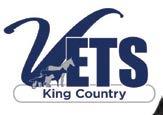





He remembers the Springbok tour of 1981 and the game in Hamilton –he was on duty at the A&E department of Te Kuiti Hospital on the day.
“The entire town decamped for it. And then, when they all got back, it



The basic infrastructure is still there and with the New Zealand health system at an absolute crucial crossroads, he believes the government, no matter which party is in power, has very little option but to move forward in bringing back the ability for communities to train and employ their own.


















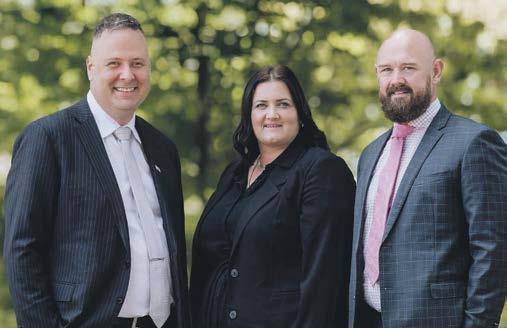




As a local team, Rosetown Funerals is honoured to support this special centenary. We’re proud to stand alongside those who’ve cared for generations of families –just as we do today.



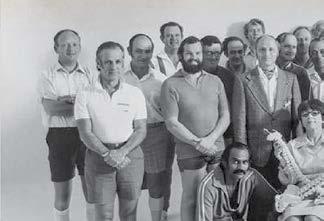




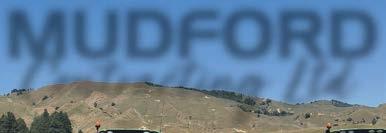
If there is one surgeon/doctor everyone mentions in the history of Te Kuiti Hospital, it’s Rabindranath (Robin) Azariah.
“The words spoken are always in admiration. A qualified neurosurgeon, and orthopedic surgeon, there were few surgery [types] he couldn’t put his hand to, and those and wide and ranging types could be done in a day.”


Robin, who was born in India (and the grandson of the first Bishop of the United Church of South India) and who received his medical training through Vellore’s Christian Medical College in 1955.
He travelled extensively to England to continue his surgical training and in 1966, was appointed resident surgeon at Te Kuiti Hospital.
His skills in orthopaedic surgery, which was a special interest to him, were regarded by his peers as second to none.
His strongly compassionate nature meant he spent time studying and developing methods of pain management for his patients.
The after surgery care programmes that he developed along with his wife, and psychologist Pierre Beautrais included group therapy with such things as meditation, relaxation, visualisation and bio-feedback, which were all well before their time, but were known to work. He also became editor of the New Zealand Pain Society magazine.
In 1979, a NZ Government-commissioned report on chiropractics recommended that only chiropractors and osteopaths should practice manual therapy.





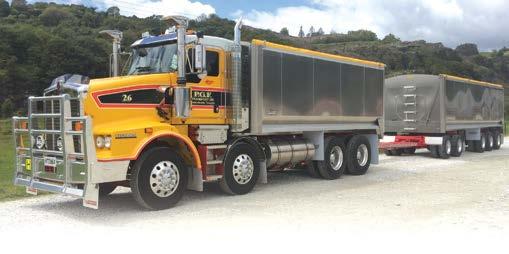

The NZ Medical Association at the time, formed a committee; Dr G Perry (rheumatologist), Dr J G Abercrombie, Dr R Bernau, Dr C M Williamson and Dr D Carnachan (general practitioners interested in manual therapy) to respond to this report.

They strongly believed there were deficiencies in the report and subsequently, it was never enacted. However, the committee also acknowledged deficiencies in medical training of doctors to examine and treat common musculoskeletal complaints with manual therapy.
They formed the NZ Association of Musculoskeletal Medicine in 1980 with the aim of promoting and teaching musculoskeletal medicine in NZ. This new organisation was very popular, immediately attracting 40-50 members of which Robin Azariah was part.
In the first year of its existence, a further 150 medical practitioners joined.
The first conference was held in Rotorua, in 1981, and NZAMM became a member of the International Federation of Manual Therapy (FIMM) in the same year. In 1982, a combined meeting was held with the Australian Association of Manual Therapy (AAMM) in Rotorua, with links that remain strong today. Robin, also an enthusiastic tennis player, received a Queens Service Medal in 1988 for his contributions to the medical field.
Robin’s work in this field is still remembered today.

He died on 16 April 1990 aged 58, survived by his wife, Margaret, daughters Sunita and Suzy and stepsons Carne and Alistair.

“On behalf of Prescott Toyota we extend our heartfelt congratulations to Te Kūiti Hospital reaching their incredible 100 year milestone”










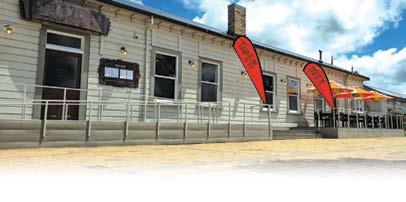










In looking back over the past 100 years’ history of the Te Kuiti Hospital, Dr Keith Buswell is reflective on where medicine – and the hospital itself – will go from here.
“Such a lot has changed from its heyday of the 1970s and 80s.”
He agrees that health and in particular rural health, has reached crisis point in New Zealand.
“Like almost all rural practices, we are in an extremely vulnerable position. We have half the doctors we had this time last year and are constantly on the lookout for potential recruits.


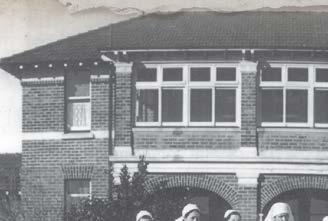

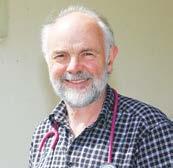
“Many of the roles traditionally filled by doctors are being performed by other staff – everyone has to work at the top of their scope – and beyond!”
“Nurses are becoming more qualified - as nurse practitioners, nurse prescribers, specialisation in diabetes, heart failure, sexual health and chronic wound management. They often take the place of doctors in the assessment and management of patients presenting acutely.”

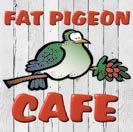



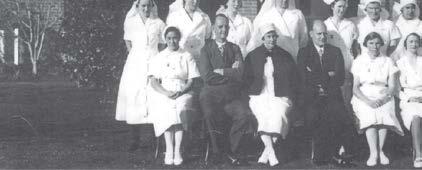
He says Te Kuiti Hospital and the Te Kuiti Medical Centre have structured their practice towards ensuring there is strong support for this. In addition, for several years they have recruited Physician Associates from USA and Canada where they have been part of the medical workforce for many years.
Their training is similar to that of a GP in New Zealand, and they have often worked in rural and remote areas in their own countries.

All these initiatives are helping to make the future look a bit more promising, he says.

“We are in the same position as anyone else in New Zealand – there simply don’t seem to be enough young ones coming through.
“We are really optimistic that rural hospital medicine specialists and rural GPs will continue the work that has been started – many of the registrars we have here are trained in both,” he says.
He is mindful of the inexorable marching of time.
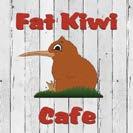





“Elly and I are both at retirement age – not ready just yet, though – and we would like to have a secession plan that ensures our community continues to have access to good medical care the way it has for the past 100 years,” he says.
While he would like to see the successful training hub system that Australia now has in place, and one much favoured by Professor Ross Laurenson, where smaller centres attract all health practitioner training, he worries Te Kuiti may be a bit too small to be successful with it.
“You only have to look at the ambulance service which has relocated local staff to Te Awamutu. There is an expectation that you will live where you train and work – but it’s become much harder to do that in Te Kuiti and commuting seems to be the way of the future,” he says.

“Amongst other things, it is increasingly difficult to provide emergency services when staff don’t live locally.
“Living and working in a rural community is very rewarding, but we have to be flexible to accommodate the different choices people make. In doing so it gives him hope for the future of the hospital and its much-needed services.”



Te Nehenehenui and nib health insurance have partnered to offer the ‘Te Nehenehenui Everyday Health Plan’

The Te Nehenehenui Everyday Health Plan is a specialised health insurance package focusing on everyday health and wellbeing for whānau affiliated to Ngāti Maniapoto me ona hapū maha. For kaumātua aged 65 and older, you may be eligible to get the package for free for the first year, followed by a heavily subsidised package.
What does the package include?
Enjoy benefits such as dental, optical, GP consultations, and prescription coverage. The Everyday Health Plan also provides access to: Rongoa Māori vaccinations physiotherapy dietician or nutritionist and osteopath support


Additionally, the plan includes a Tangihanga Support Benefit, offering a cash grant to assist whānau with tangihanga/funeral costs, providing crucial support during difficult times.
For more information or to enrol, scan the barcode or visit our website: www.tenehenehenui.iwi.nz



If you affiliate to Maniapoto, stay connected by registering today: www.kakaho.tnn.co.nz


•Energy
•Energy
•Bright
•Community
•Sponsorships
•Scholarships




















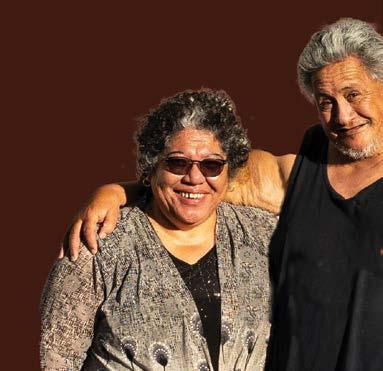


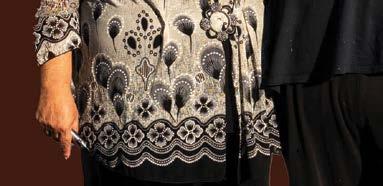








Across 1. Cruel and vicious (6)
4. Sharpness of vision (6)
9. Proportion (5)
10. Plant farm (7)
11. Sportsperson (7)
13. Tardy (4)
14. Topple (11)
17. Flaccid (4)
18. Sprouting pea (7)
Alternative power for
(7) 22. Charred (5)
Tie up (6)
A spell of luck (6)
Large tank (3)
Dwarfish figure (5)
Popular car model (7)
Exactly the same (9)
Toy on a string (2-2) 8. Close and devoted (11)
Confront to resolve a matter (4,2,3)
(7)
Across: 1. Bars, 4. Stress, 8. Corsair, 9. Irate, 10. Scab, 11. Deadbeat, 13. Short-term, 17. Obsolete, 19. Bale, 21. Traps, 22. Onetime, 23. Recess, 24. Sage. Down: 2. Arrears, 3. Swap, 4. Surreptitious, 5. Reindeer, 6. Scale, 7. Berth, 8. Cost, 12. Coalesce, 14. Meaning, 15. Forte, 16. Sere, 18. Scare, 20. Fees.
AOYMLISTAWPGNAINNA HASPPLEASUREHNIDTR SNLETCVSYTDPLFETEE UAPTRIOLCXLMELOCRA BGVIGRCUVATDGRDOWN JRHTCWRITEYCEDPMOA EASIHTLKGRVSLCYPRO CMJOSEBSAUAJEOTLDL
TVQNWPTNOEUCIRHESE CYOOIIOBTLCLSRITEX TCVCKIZNQWVUUENEAI FCBNTUIJPORERCKTRC QGACVAKKXOLSETOACO SLIARROWWORDSDDPHN BDCBKGCHALLENGEZER




Kaycee Christison Tidy Gardens
As the chill of early winter settles in and the garden growth begins to slow, now is the perfect time to shift your attention from the plants themselves to the tools that help you care for them.
Mower Maintenance Made Easy
With lawns no longer demanding weekly cuts, it's an ideal moment to service your lawn mower. A clean, sharp mower not only makes your job easier but also keeps your lawn healthier.
You’ve got two options: either drop your mower into the local repair shop for a professional service, or give it a go yourself. If you choose the DIY route, there’s one crucial rule to remember — never tip your mower on its side, as oil can leak into the air filter and cause damage. Instead, always tip it backwards, with the handle resting on the ground.
Be sure to clean underneath the deck, especially if you've been mowing damp grass. Built-up clippings reduce the space for the blade to spin and make it harder for the machine to blow clippings into the catcher. A good tip for mowing wet grass is to take half-width passes — this reduces strain on
the mower and helps prevent blockages in the chute.
Get Ready to Prune Like a Pro Roses, hydrangeas, and other deciduous shrubs will soon be ready for their annual prune, and sharp tools are essential for making clean cuts that help plants heal quickly and stay disease-free.
Now’s the time to check over your secateurs, loppers, and shears. A quick winter refresh will have them performing like new.
Here’s how:
1. Clean off sap and grime with a spray of WD-40, CRC, or methylated spirits. Loosen any stubborn residue with fine sandpaper, then wipe everything dry with a clean cloth.
2. Sharpen the blades with a sharpening stone and a little oil. Focus only on the angled edge, and two or three passes should do the trick.
3. Lubricate the pivot and spring with a drop of oil to keep everything moving freely. This step also helps prevent rust if your tools are ever put away damp.
Repeat this process for all your cutting tools and you’ll be well prepared for the pruning season ahead.
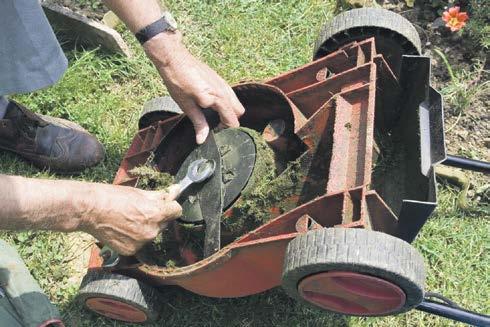

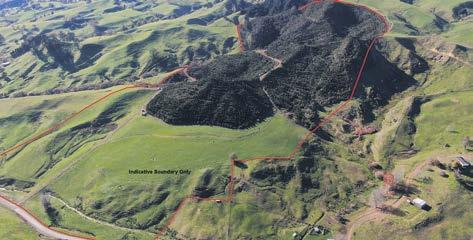


This one of a kind property is 36.4ha (more or less) with approx 8ha of easy rolling pastural land fenced to a high standard. Stunning northern views from the proposed elevated house site, looking out to Mt Pirongia and Kakepuku.
The adventure/investment includes 11.5ha of 2021 planted pine trees, 9.5ha of 2022 planted pine trees and balance of native bush. Of the 21ha in pine trees, approx 15ha is registered under ETS. All forestry is in second rotation (harvested 2018 & 2019), tracks and skid sites are well established.
Conveniently located approx 14km from Otorohanga and 16km from Te Kūiti.
pggwre.co.nz/TEK41854 OTEWA Bush Road Adventure - Lifestyle - Investment






























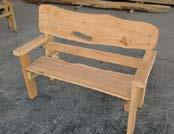








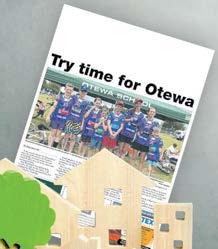


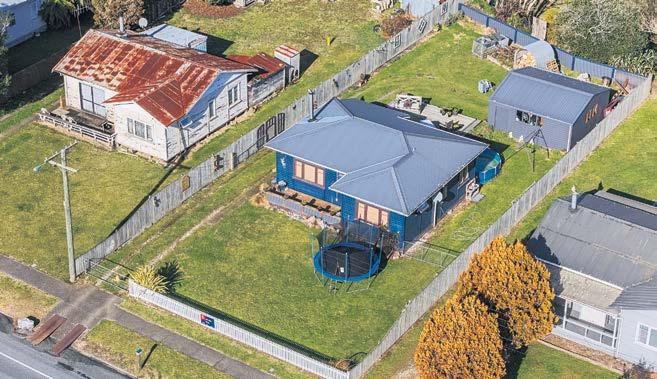



Set on a 809 m2 flat, freehold section, this character-filled 1940s home offers comfort, practicality, and the convenience of being close to the local school and shops. Step inside the 85 m2 residence and discover three bedrooms, a warm and welcoming open-plan layout combining the kitchen, dining, and lounge area - perfect for modern living. A cosy woodburner keeps the home toasty in cooler months, while gas heats the water efficiently. Underfoot, you'll find a charming mix of native wood flooring and carpet, adding both style and comfort throughout. Enjoy seamless indoor-outdoor flow with an attached deck - ideal for entertaining or soaking up the sun - while the fully fenced section provides peace of mind for kids and pets. Completing the picture is a single, unattached garage for added storage or secure parking. Whether you're a first-home buyer, downsizer, or investor, this well-located property is packed with potential. Don't miss your chance to make it your own.








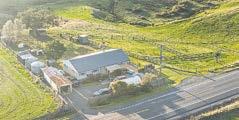






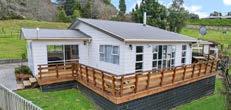

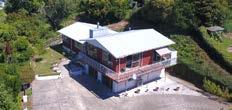

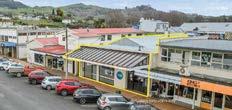

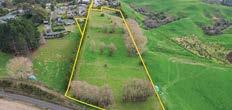

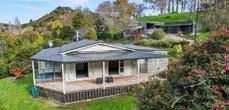



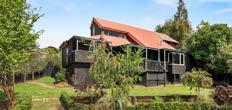

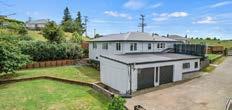






Ōtorohanga sections (sizes are approximate)
Lot 1, 52 Old Te Kuiti Road, Otorohanga, 1876sqm, power and
Lot 2, 0 Old Te Kuiti Road, Otorohanga, 2716sqm, power and water
9 Sunset Close, Otorohanga, 750sqm in popular Westridge. Phone Lorraine or
163 Old Te Kuiti Road, Lots 1 & 4, 5517-8932sqm, easy covenants. Phone Lorraine From $250,000ea
Lot 1, 627 Waitomo Valley Road, Otorohanga, 8105sqm rural lifestyle section. Phone Julie $320,000
Lots 90-108 Harpers Avenue, 486sqm to 962sqm, Westridge II subdivision. Phone John From $220,000ea
576C Mangawhero Road, Otorohanga, 1ha, fenced, sensible covenants. Ph Noldy Offers over $385,000
2/823 Ngahape Road, Otorohanga, over 6000sqm, elevated building site, rural views. Ph Noldy $450,000 3/823 Ngahape Road, Otorohanga, over 6500sqm of land, power to boundary, fencing in. Ph Noldy $450,000
Te Kūiti sections (sizes are approximate)
35 Robin Azariah Place, Te Kuiti, 1084sqm, handy to schools and hospital. Phone Buzz $250,000
54A Ailsa Street (Lot 1), Te Kuiti, 2159sqm, end of a cul de sac, STT. Phone Buzz By Negotiation 54A Ailsa Street (Lot 2), Te Kuiti, 1707sqm, end of a cul de sac, STT. Phone Buzz By Negotiation
10 Robin Azariah Place, Te Kuiti, 600sqm level section. Phone Buzz
Other sections (sizes are approximate) 71 Hone Street, Kawhia, 1012sqm bare section in Kawhia, freehold with no covenants.
0 State Highway 3, Piopio, 984sqm. Phone Buzz









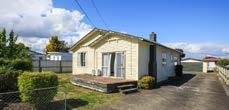

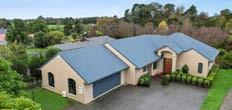

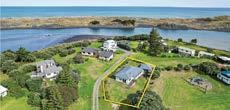

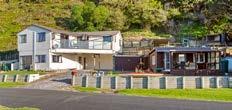


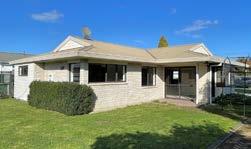
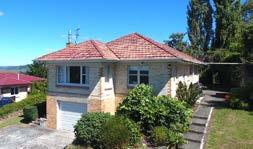
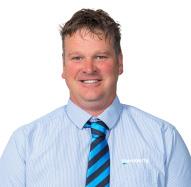



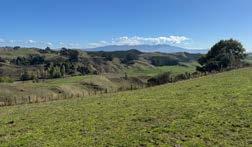









M 027 554 8248 todd@toddormsby.co.nz
6 Main North Rd, Ōtorohanga P 07 873 6364
Quality workmanship guaranteed

• House alterations and maintenance
• Farm pumps, sheds, cowsheds
• Heat pumps and transfer kit installations
• Security alarms • Cable locating... and much more!
45 Waitete Rd, Te Kūiti • P: (07)878 8842 E: tekuiti@laserelectrical.co.nz

DOES YOUR CAR NEED SOME TLC? YOU DON’T HAVE TIME? OR CAN’T BE BOTHERED? WELL I DO! AND I CAN! Feel free to ring me for a free quote 022 467 0776




Hutchison
tier1fencing@outlook.co.nz tier1fencing.co.nz
























• Emptying septic tanks
• CCTV pipeline inspection
• Jetting drainage pipelines
• Spreading animal effluent
Waitomo Liquid Waste Disposal 021 111 3911
TRADE PROFESSIONALS

DAIRY SPECIALIST • DOMESTIC COMMERCIAL • INDUSTRIAL
David Knight - 027 722 4857
Steve Knight - 027 598 2005
Tai Dundas - 027 598 2115
Ōtorohanga - 07 873 6385
Te Kūiti - 07 878 5169
Taupo - 07 378 8545
SERVICING THE KING COUNTRY 24 HOURS, 7 DAYS A WEEK

Ōtorohanga
Need a Decorator - Call Now
Dave Rowe Painter & Decorator




ELECTRICAL SERVICES / Residential / Commercial / Industrial / Inspections P 07 878 8335
E james@marshallelectrical.co.nz W marshallelectrical.co.nz






Property maintenance and construction Lawns,trees,stumpgrinding,sections,moss&mould treatments,Chemwash,waterblasting,guttervac, watertankandtroughcleaning fences,retaining,oddjobsandmore. Referencesavailable GSTregistered.
Mike & Allana 027 350 0836 – info@handy-man.co.nz




When: July 12, 2025 commencing at 10am. Where: Te Kumi Whare, Main Rd SH3, Te Kūiti.
Who: For the descendants of Kiritahanga Te Kaama Totorewa and Te Manukura Mahuki and members of Ngāti Kinohaku hapū who affiliate to Te Kumi Marae. Also, the Trustees of the land block Te Kumi A27.
Agenda:
Annual Financial Report
Chairperson's Report
Appointment of Trustees
General Business
Nominations for Trustees are: Wayne Ball Fonteyn Moses-Te Kani Shinae Carrington Kellie Spee Megan Burgess
Any nominations for trustees or items for general business to be sent to secretary@tekumipaa.co.nz
Meeting of Owners of Te Kawa A8A2 19 July 2025 at 12pm,Kaputuhi Marae 81 Waitomo Caves Road,Hangatiki
Agenda:
• Meeting Opens / Karakia
• Whakawhanaungatanga
• Trust Review / Background
• Appointment of/Change of Trustees
• Meeting Closure / Karakia
Enquiries to: Donna Tarawa 021 02962788 or Tui Ashe on 0211636405 TE KUMI MARAE AGM
On 30 June 2025, Waitomo District Council adopted the Waitomo District Dog Control Bylaw 2025 and Waitomo District Dog Control Policy 2025.
The policy was adopted in accordance with section 10 of the Dog Control Act 1996 (DCA) and took effect on Tuesday 1 July 2025. The policy must give effect to and be consistent with a Dog Control Bylaw that is approved under the DCA. The bylaw also took effect on Tuesday 1 July 2025 pursuant to section 156(2) of the Local Government Act 2002.
Following a review and consultation process (1-31 May 2025), amendments to the bylaw and policy were made including:
- All of Centennial Park is now a prohibited area for dogs, noting that on-leash dogs can be walked around the perimeter of the park (outside the bollards)
- Ward Street reserve will become an on-leash area only
Council will also consider future dog friendly areas and sites during the next Annual Plan/Long Term Plan.
The bylaw and policy are available on Council’s website. Hardcopies can also be requested by contacting our Customer Services Team on 0800 932 4357 or email: info@waitomo.govt.nz
Ben Smit Chief Executive
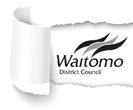
Council adopts Annual Plan 2025/2026 Waitomo District Council adopted its Annual Plan 2025/2026 on 30 June 2025.
Council also adopted the revised Rates Remission Policy, Revenue and Financing Policy. The Annual Plan (digital version) is made available on our website www.waitomo.govt. nz. Printed copies will also be available in late July. You are welcome to view the Annual Plan at the WDC Customer Services and Visitor Hub at Rora Street, Te Kūiti, or the Library on Taupiri Street. You can also request a copy by contacting our Customer Services Team on 0800 932 4357.
On 30 June 2025, Council adopted the fees and charges for 2025/26. These fees and charges apply from 1 July 2025. Due to the impact of rising costs Council has increased most fees and charges by 3% in line with inflation. This ensures costs are recovered so that Council services are not subsidised further by rates.
The most significant changes are:
- Changes to water, wastewater and stormwater connection fees
- Landfill and rubbish bags
- Elderly housing
Alcohol Licensing
On 30 June 2025, Council adopted the Alcohol Fees Bylaw 2025 that allows Alcohol Licensing fees to be set by Council. This will not impact the Manager’s Certificate fees. The Alcohol Fees Bylaw 2025 can be found on Council’s website.
The schedule of Fees and Charges is available on our website www.waitomo.govt.nz.
You can request a hardcopy of the fees and charges by contacting our Customer Services Team on 0800 932 4357 or email: info@waitomo.govt.nz
Ben Smit Chief Executive

The 2025 Local Elections are coming – and your community needs local voices around the Council table.
If you care about your community, have ideas to share, and want to help shape the future of the Ōtorohanga District, now’s the time to get involved.
We’re here to help you understand what’s involved and support you through the process. Whether you’re just curious or ready to take the next step, we’ve got two great opportunities for you to learn more:
Candidate Info Evenings
Join us for a relaxed, informative session where you’ll:
• Hear from our Chief Executive, Tanya Winter
• Meet the Elections team
• Learn what it’s really like to be a Councillor
• Ask questions and get the facts – no pressure, just honest kōrero
Kāwhia - Monday 7 July, 6:00pm, Kāwhia Community Centre
Ōtorohanga - Tuesday 8 July, 6:00pm, Council Chambers Tea with Tanya
Prefer a more informal chat? Come along to a Tea with Tanya session, a casual cuppa and conversation with our Chief Executive.
Ask your questions, share your thoughts, or just listen in. It’s a great chance to get real insight into what it’s like to serve on Council.
Ōtorohanga – Wednesday 9 July, 1:00pm – 2:00pm, Ōtorohanga Library Programmes Room
Arohena – Thursday 10 July, 5:30pm – 6:30pm, Arohena Hall
Kāwhia – Monday 14 July, 5:00pm – 6:00pm, Kāwhia Community Centre
Ōtorohanga – Wednesday 23 July, 9:30am – 10:30am, Ō Café
Key Election Dates:
• Nominations open: Friday 4 July 2025
• Nominations close: 12 noon, Friday 1 August 2025
Find out more about standing for Council Visit: www.otodc.govt.nz/about-council/elections/candidates Call us: 07 873 4000 Email: info@otodc.govt.nz
If you are passionate about delivering excellent customer service and connecting with the community, we want to hear from you.
We have an exciting opportunity for someone to join our library team, based at the Waitomo District Library in Te Kūiti .
You will play a key role in ensuring the experience for all customers at the library is welcoming, inclusive, accessible and community friendly.
You will spend your day doing a mix of tasks including helping our customers by recommending reads, assisting with information enquiries, and aiding with a variety of different technology needs. You will also lead the development and delivery of a wide range of library programmes, catering to a diverse audience.
Promotion of our services is an everyday task, and you will maintain the library website and social media channels. You will also use your creative skills to develop a wide range of promotional materials.
To be successful in this role, you have:
• Previous experience in a customer-facing role
• A creative flare
• Adaptability and organisational skills
• Empathy
• Excellent communication, analytical and digital skills
• Be a team player
• Enthusiasm about learning new technologies, gadgets and the desire to keep up with technological advances
A willingness to learn is more important than any prior library experience.
Applications close on Monday 7 July 2025
To apply for this role please visit our recruitment website: www.joinourteam.co.nz
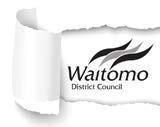
On 30 June 2025, Waitomo District Council resolved to establish a joint Council Controlled Organisation (Waikato Waters Limited) to deliver its water and wastewater services, with WDC being one of the shareholders. The decision is in accordance with the Local Government (Water Services Preliminary Arrangements) Act 2024.
Council also approved the signing of the Constitution and Shareholders Agreement for Waikato Waters Ltd.
Council undertook a robust process in developing the options and selecting the preferred water services delivery model. Consultation was undertaken from late March and all of April 2025, with 18 submissions received.
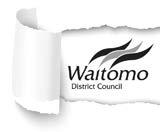
The CCO will be created in July 2025, but it will not be responsible for operations or own assets until 1 July 2026. WDC will be a Stage 1 shareholder from July 2025, with assets and liabilities transferred on 1 July 2026.
Ben Smit Chief Executive
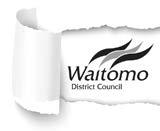























TK 2019 Limited of 89 Rora St Te Kuiti (Retailer) has made application to the District Licensing Committee at Waitomo for the renewal of an Off Licence in respect of the premises situated at 89 Rora Street, Te Kuiti known as Super Liquor Te Kuiti. The general nature of the business conducted is a bottle shop. The days on which, and the hours during which liquor is intended to be sold under the licence, are Monday to Sunday 9am to 10pm
This application may be inspected during ordinary office hours at the office of the Waitomo District Licensing Committee, Waitomo District Council, Queen Street, Te Kuiti. Any person who is entitled to object and wishes to object to the issue of the licence may, not later than 25 working days from 3rd July 2025, file a notice in writing of the objection with the Secretary of the District Licensing Committee at Waitomo District Council, PO Box 404, Te Kuiti 3941. This is the first publication of this notice.
No objection to the renewal of a licence may be made in relation to a matter other than a matter specified in section 131 of the Sale & Supply of Alcohol Act 2012. This is the first publication of this notice.
Te

HENRY, Christopher Barry Tata – Peacefully at home, surrounded by family, in Ōtorohanga, aged 67 years. Much loved father of Chanelle, Lana and Chrystal. Adored grandad to all his mokos and great-mokos. Christopher’s tangi will be held at Mokau Kohonui Marae today, Thursday, July 3, at 11am followed by burial at Te Paemate Urupa. All communications to Henry Family C/- PO Box 241, Te Kūiti 3941. VJ Williams & Sons, Funeral Directors Association of NZ





